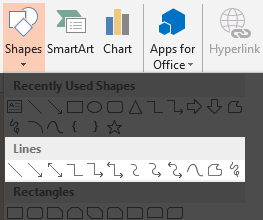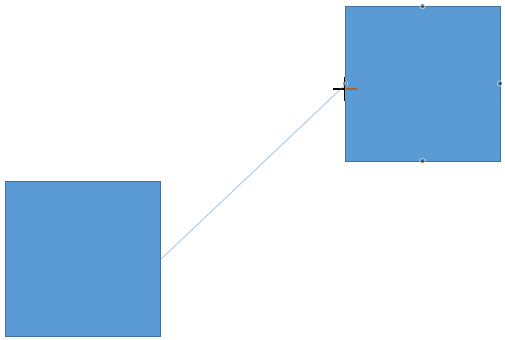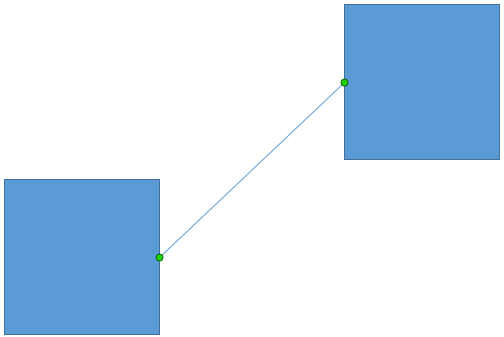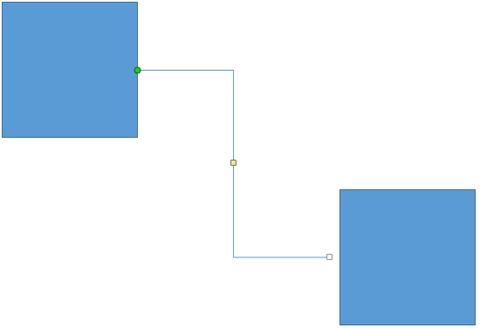Connectors are lines that link different shapes, and yet they are somewhat different from conventional lines because connectors, as the name implies stay
connected to the shapes they link, even if you move the actual shapes. You have already learned about
connectors, and the
types of connectors in previous tutorials. In this tutorial, you will learn how you
can draw connectors that link shapes.
Remember: Draw your connectors only after the shapes they are going to link are drawn. You'll need at least two shapes to start with. If you draw
your connector before the shapes are in place, your connectors will end up being mere lines with no "connects".
Follow these steps to draw a connector between shapes in PowerPoint 2013 for Windows:
- Insert two closed shapes on the slide (learn how to insert shapes in
PowerPoint 2013 for Windows). Access the Insert tab (or the Home tab)
of the Ribbon, and click the Shapes button to bring up the
Shapes drop-down gallery. From the Lines section, choose any of the first nine variants, as shown in Figure 1.

Figure 1: Lines category within Shapes drop-down gallery- This changes the cursor into a crosshair. Notice that as you move the cursor near the first shape, you'll find several blue circle handles highlighted
on the edge of the shape (see the shape on the left in Figure 2). Click on any of these blue handles to establish one end of your connector.

Figure 2: Blue circle handles highlighted on the shape- Move the cursor towards the shape you want to connect (as shown in the shape to the right in Figure 3). Click again on any of the
blue circle handles on the second shape to create the connector between two shapes.

Figure 3: Connect to other shape- This creates a connector, as shown in Figure 4. Select any shape and click on the arrow keys on your keyboard to
nudge the shape. You will find that the connector resizes and repositions according to the
new coordinates of the shape.

Figure 4: Connector connected to both the shapes
- Note: If your connector gets linked to a shape, the end of the connector line displays a green circle (see top left example in
Figure 5). If it does not get linked, you will see a white square (see bottom right example in Figure 5). It is important to
understand that mere "touching" of a connector's end to a shape or slide object does not indicate that it has been linked to that shape or slide object.
When you see a green circle at the connector's ends—only then you can be assured that the ends are connected.

Figure 5: Connectors may or may not be linked properly
- Save your presentation often.








